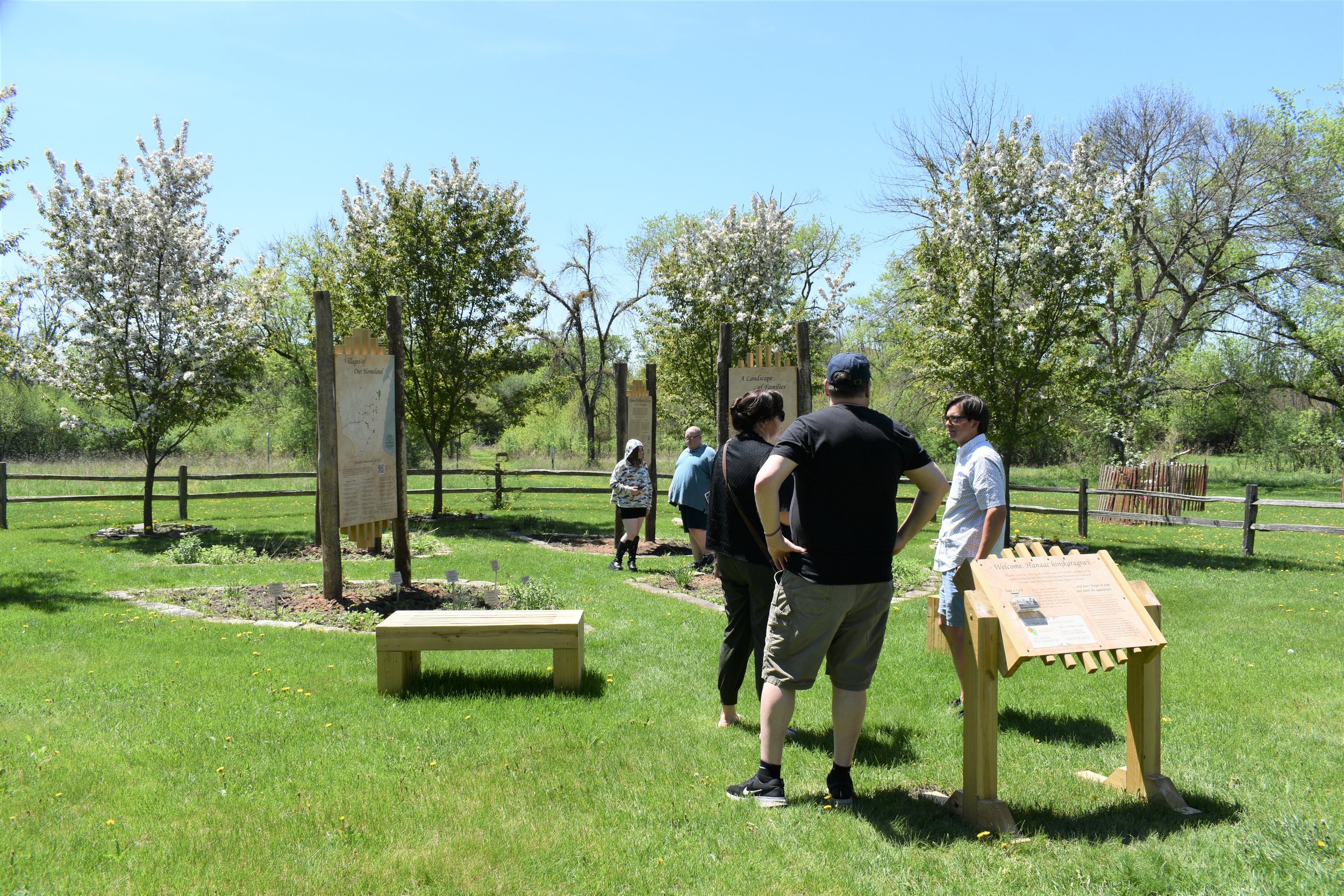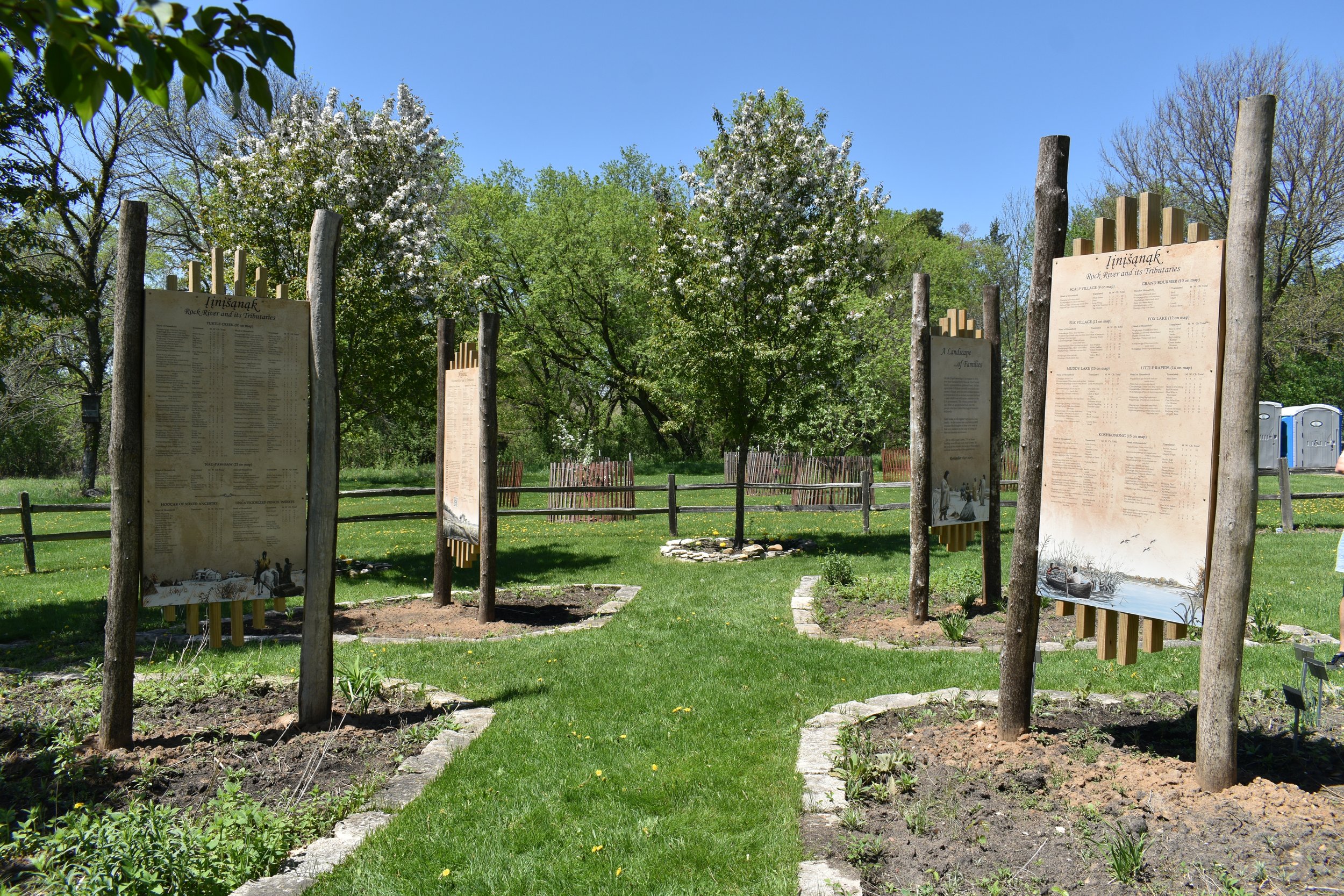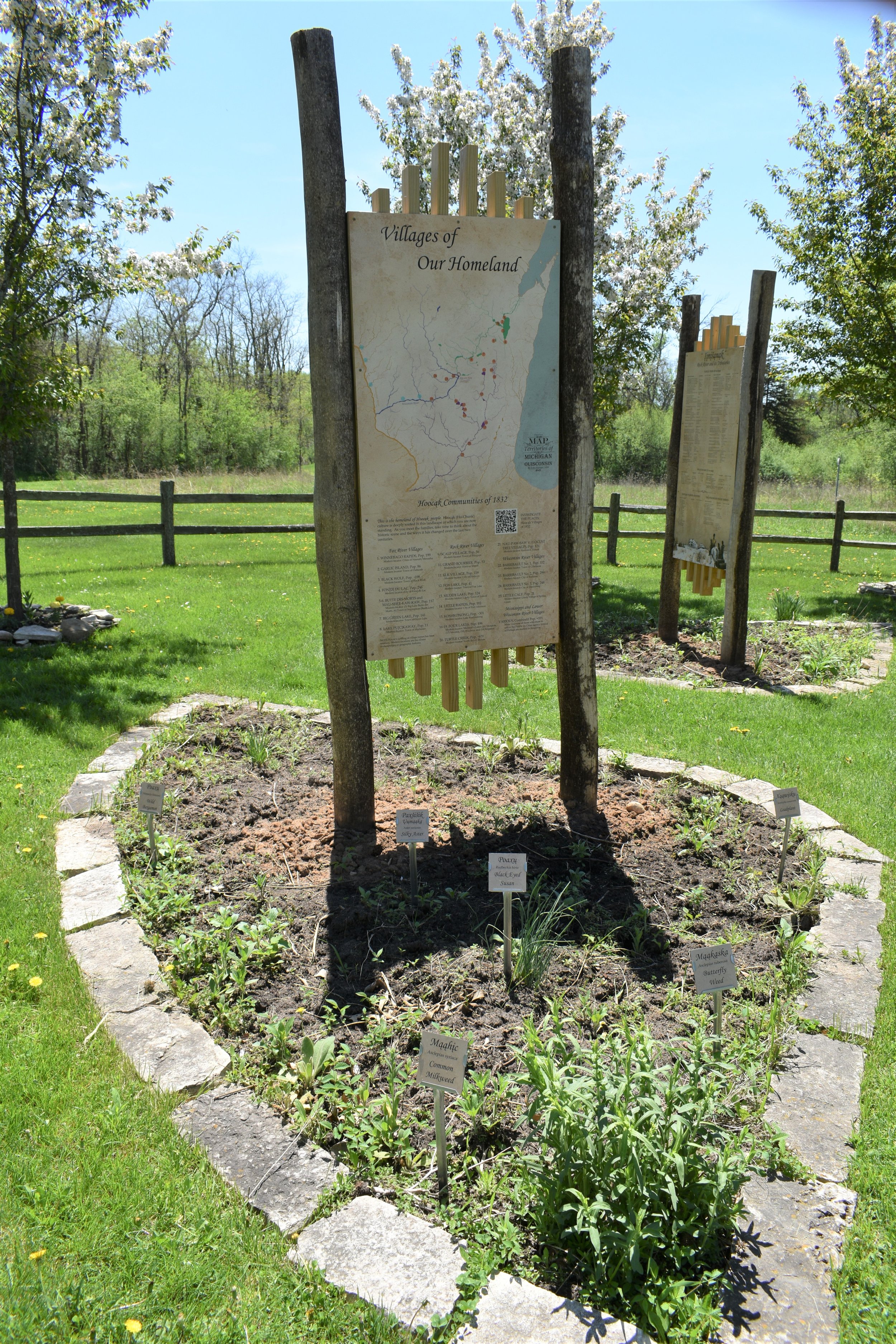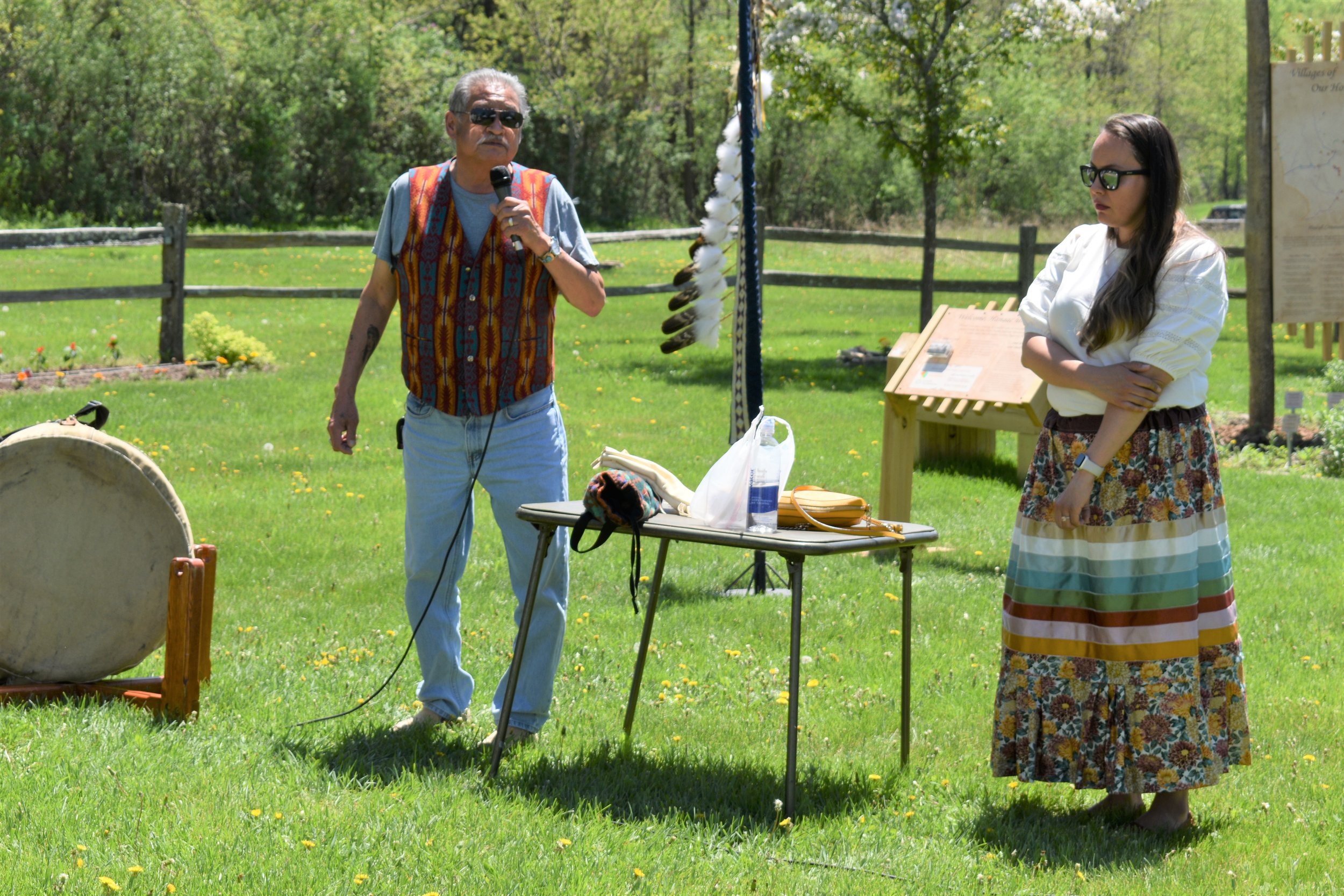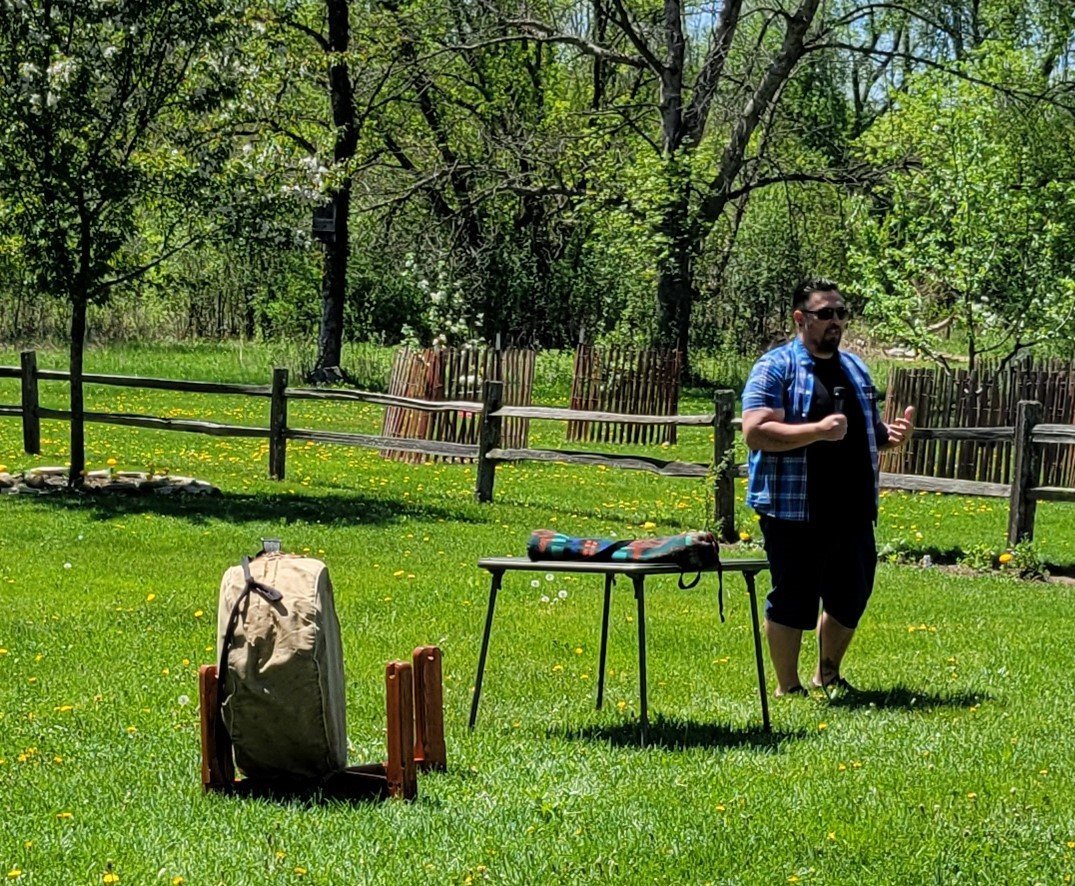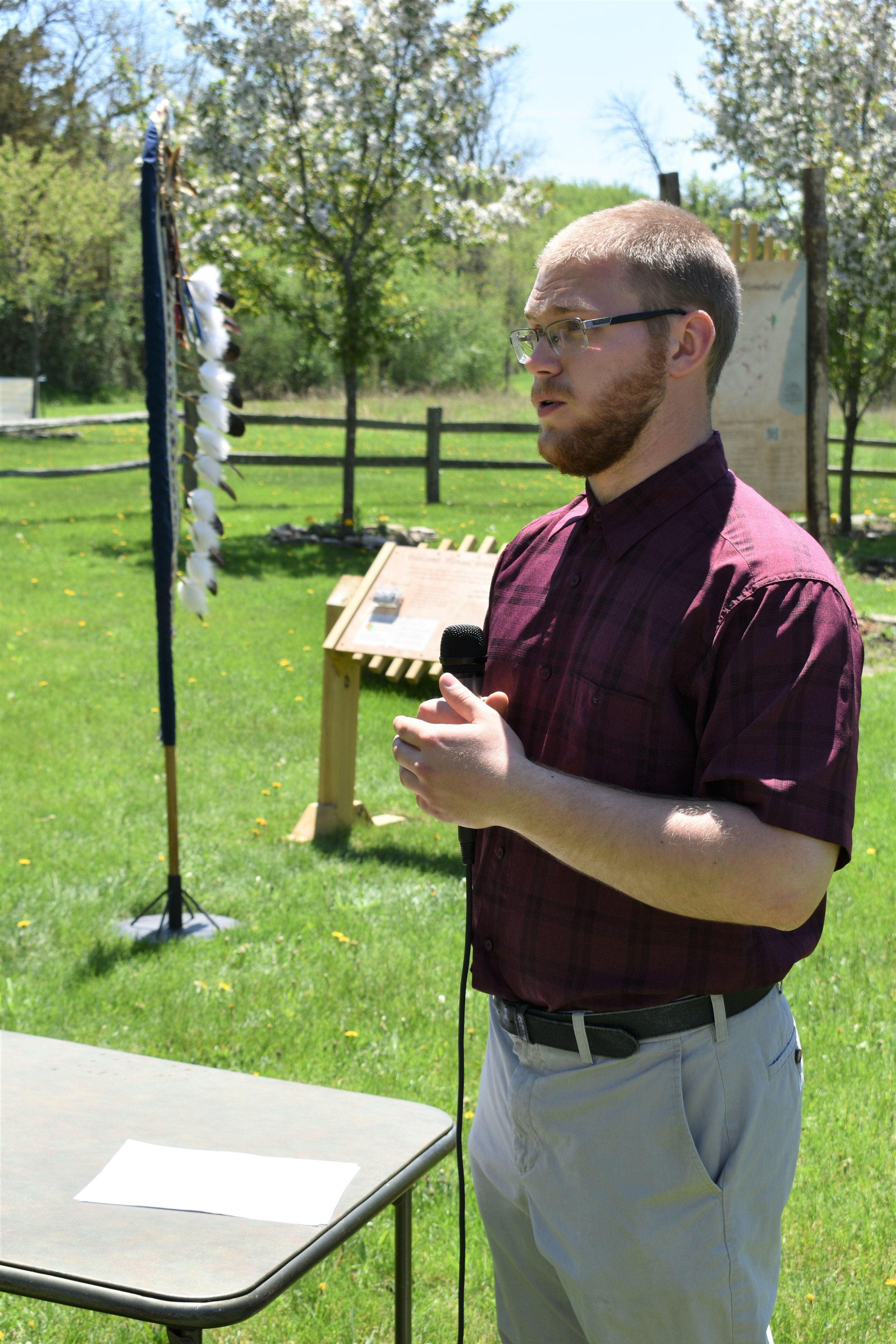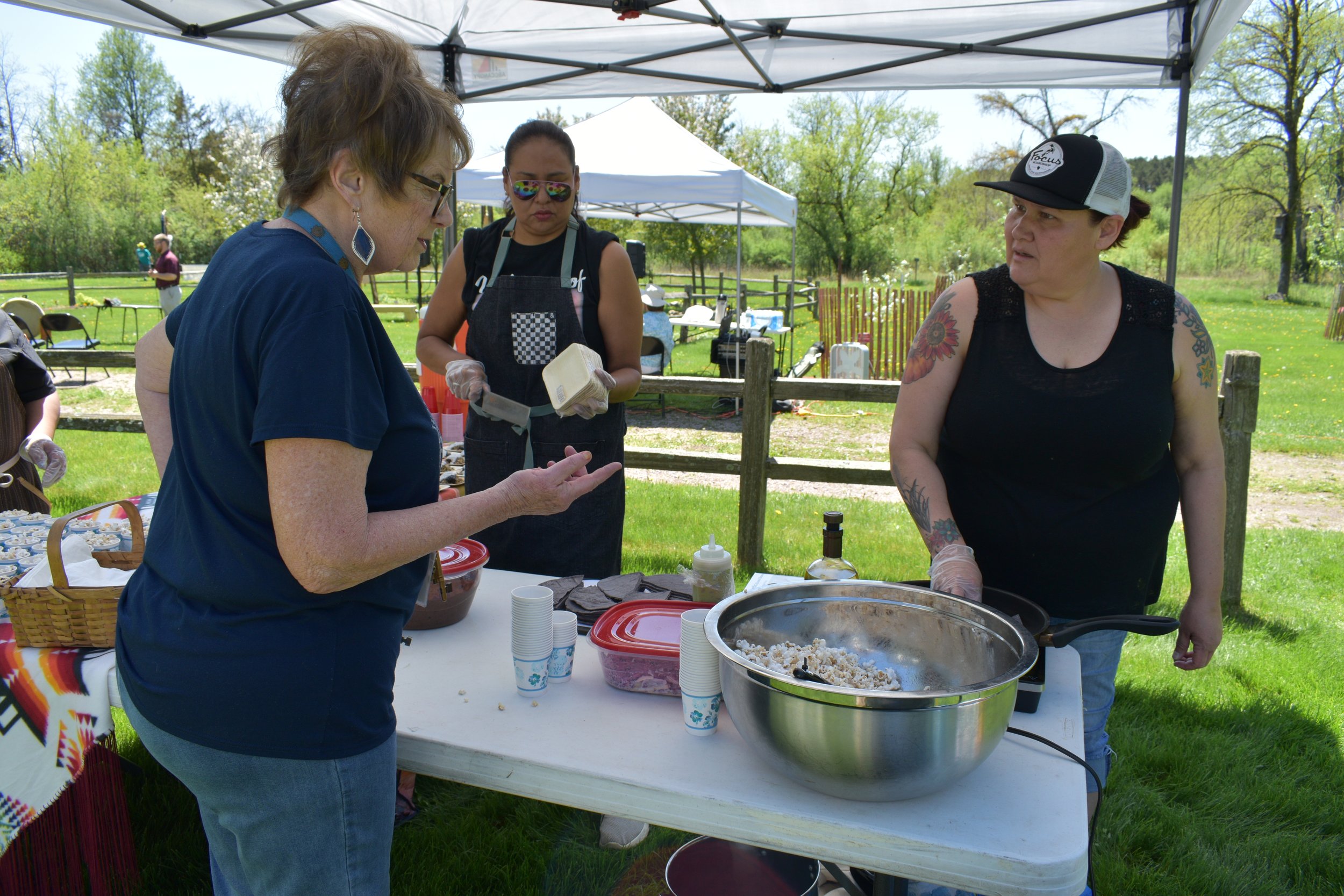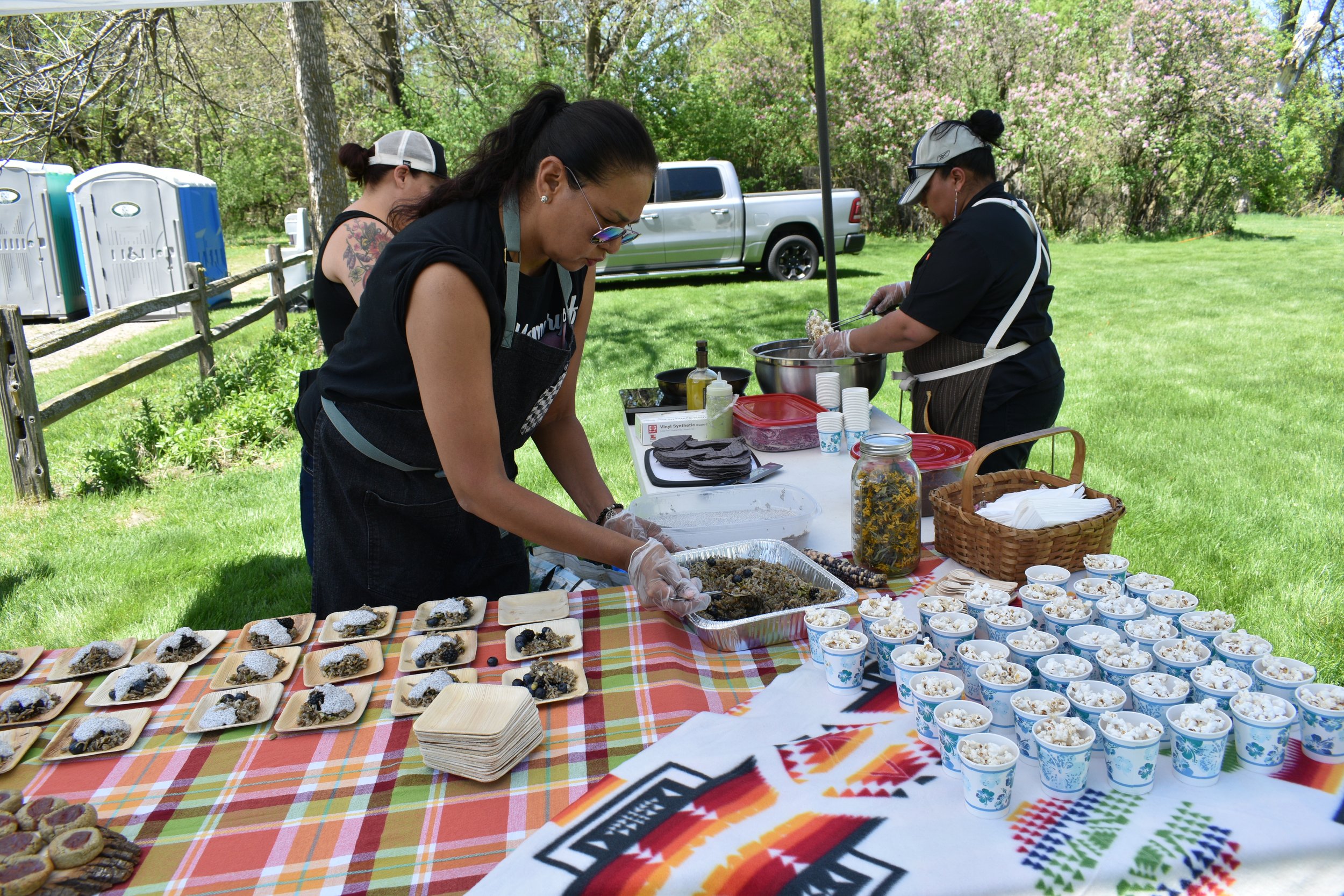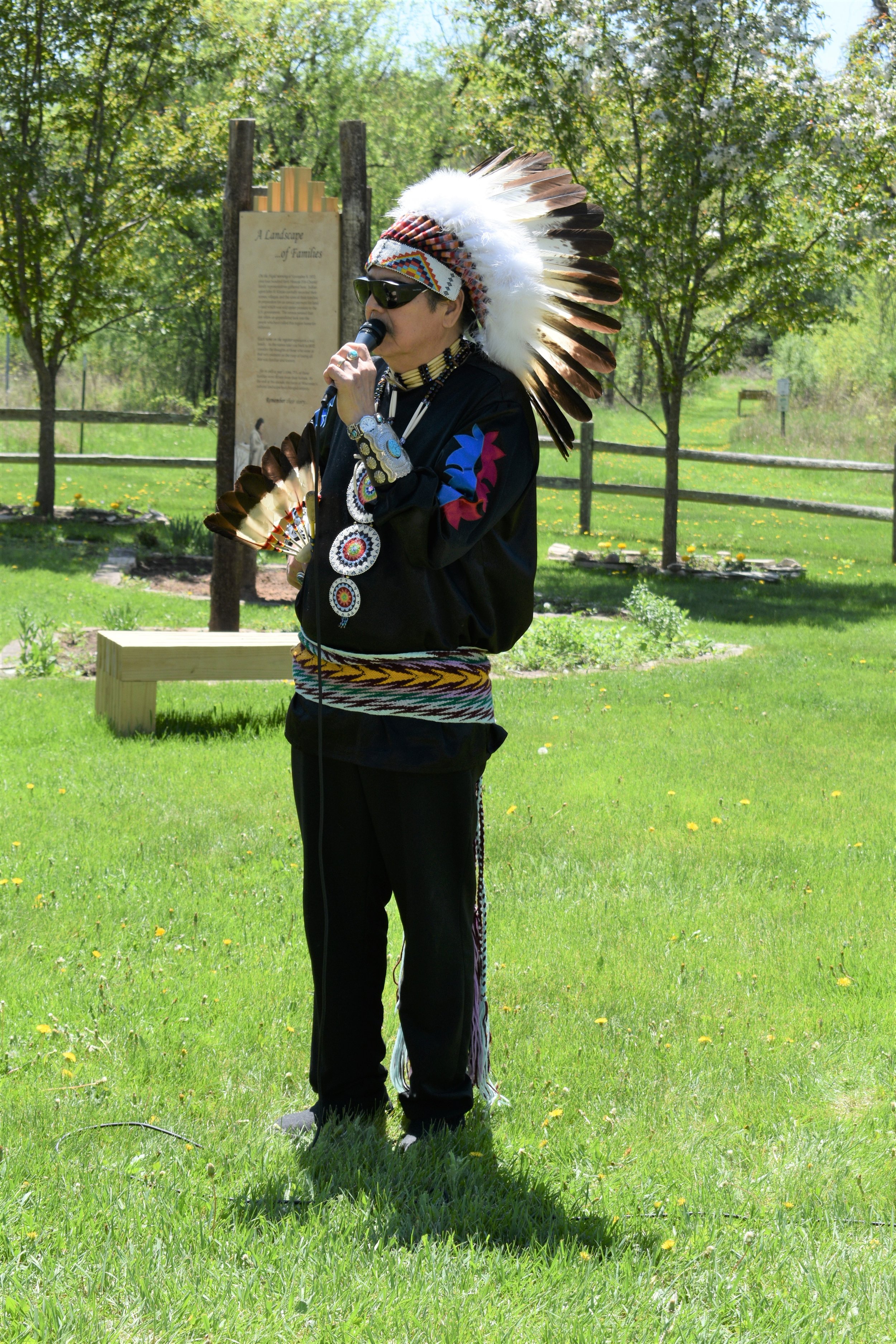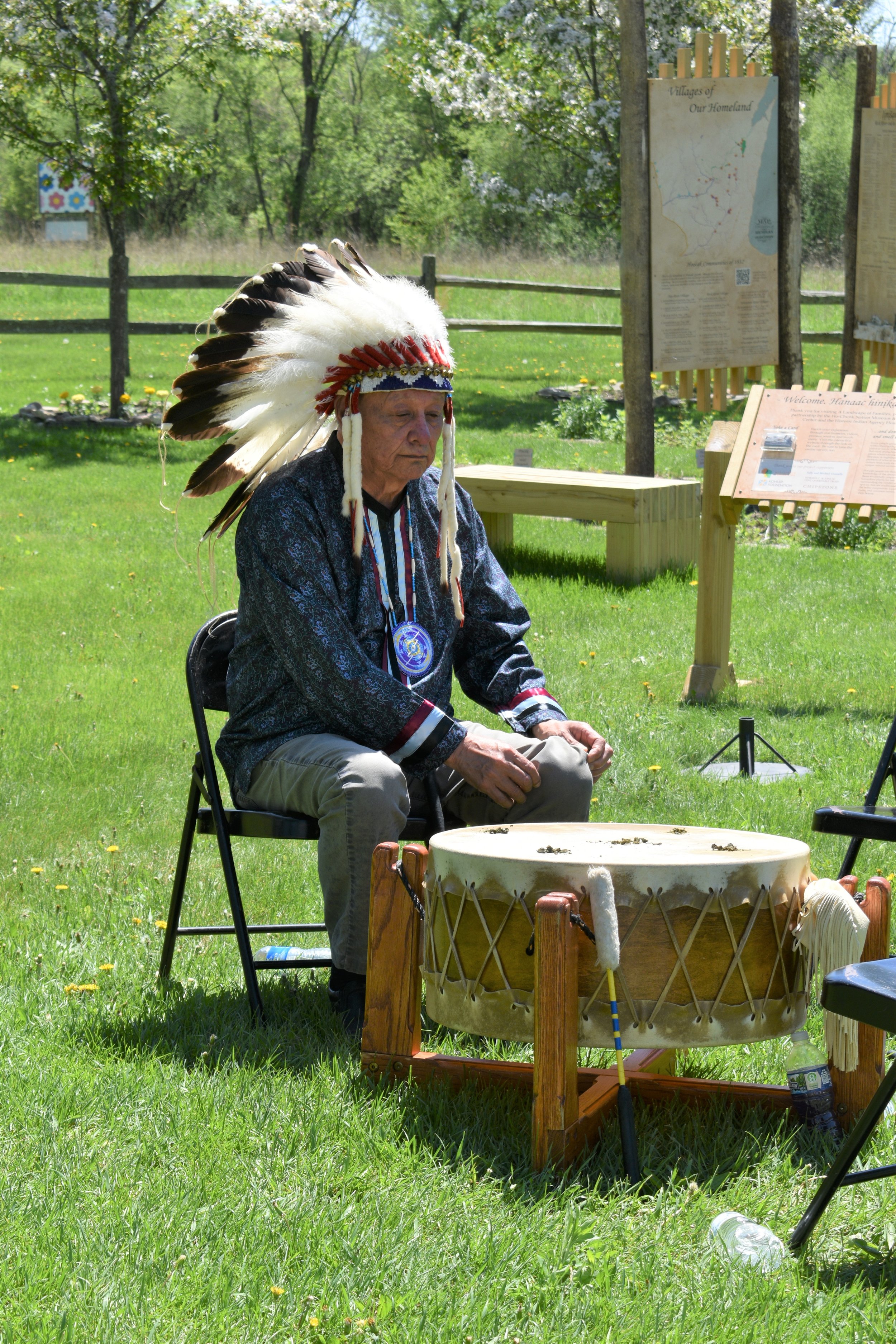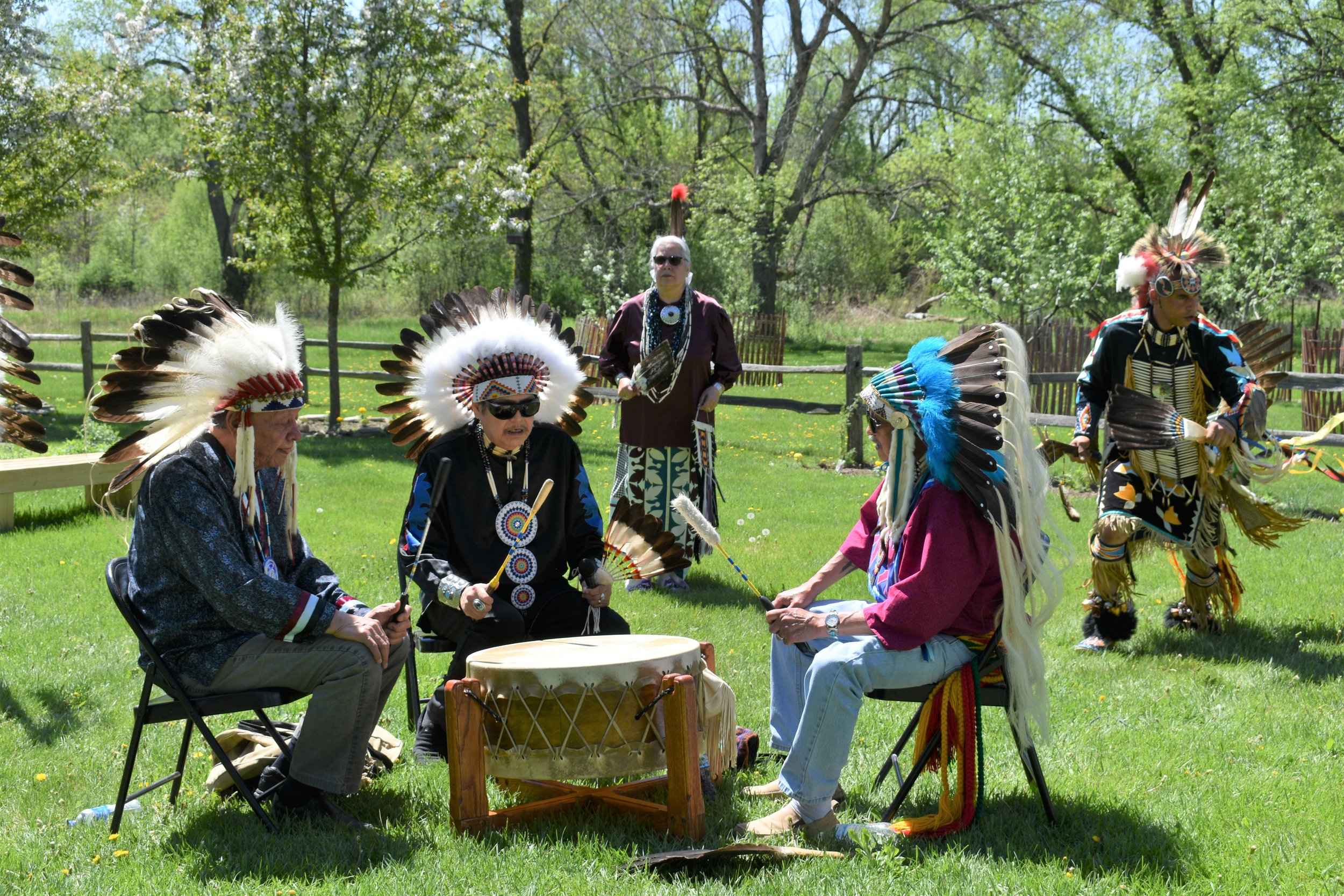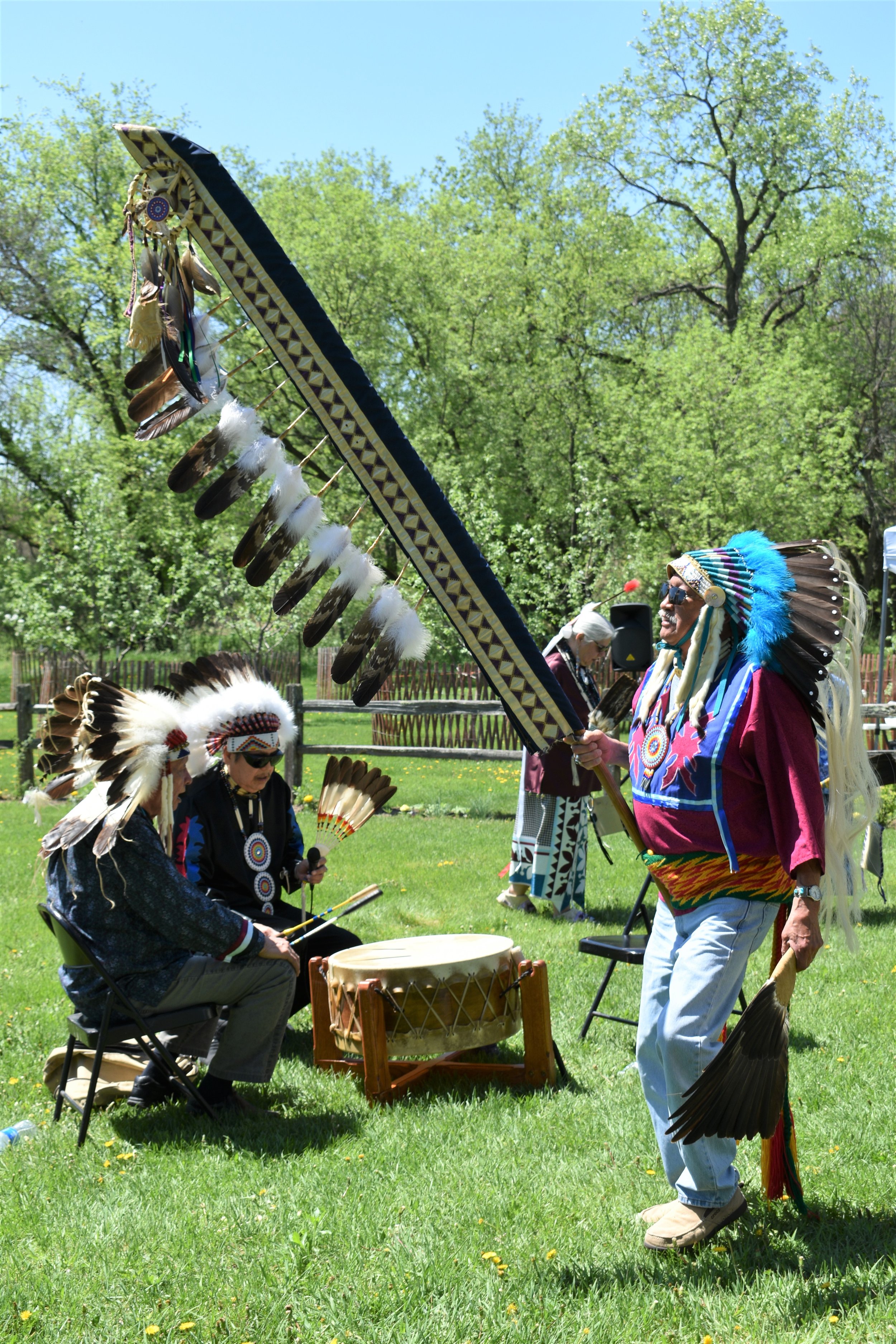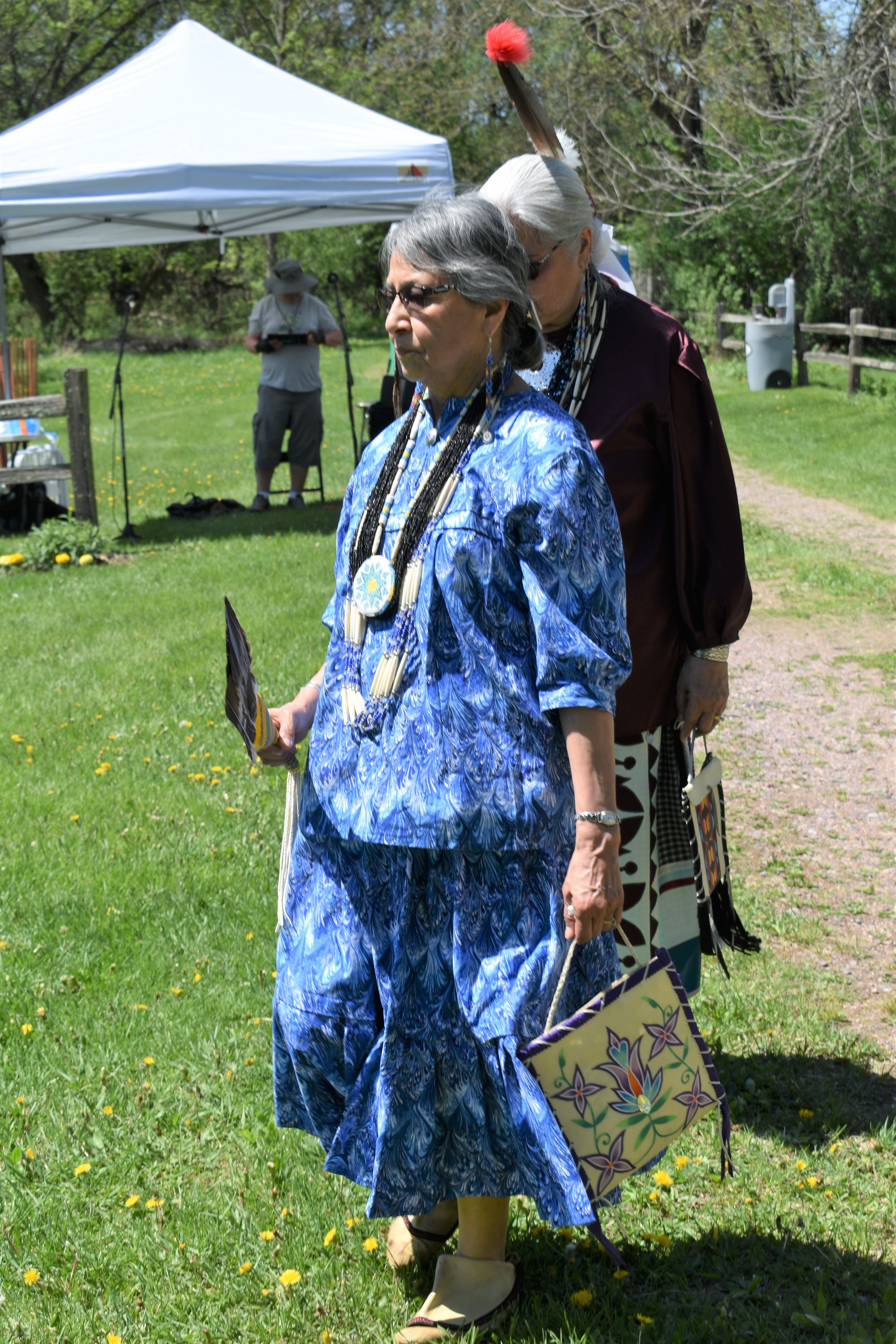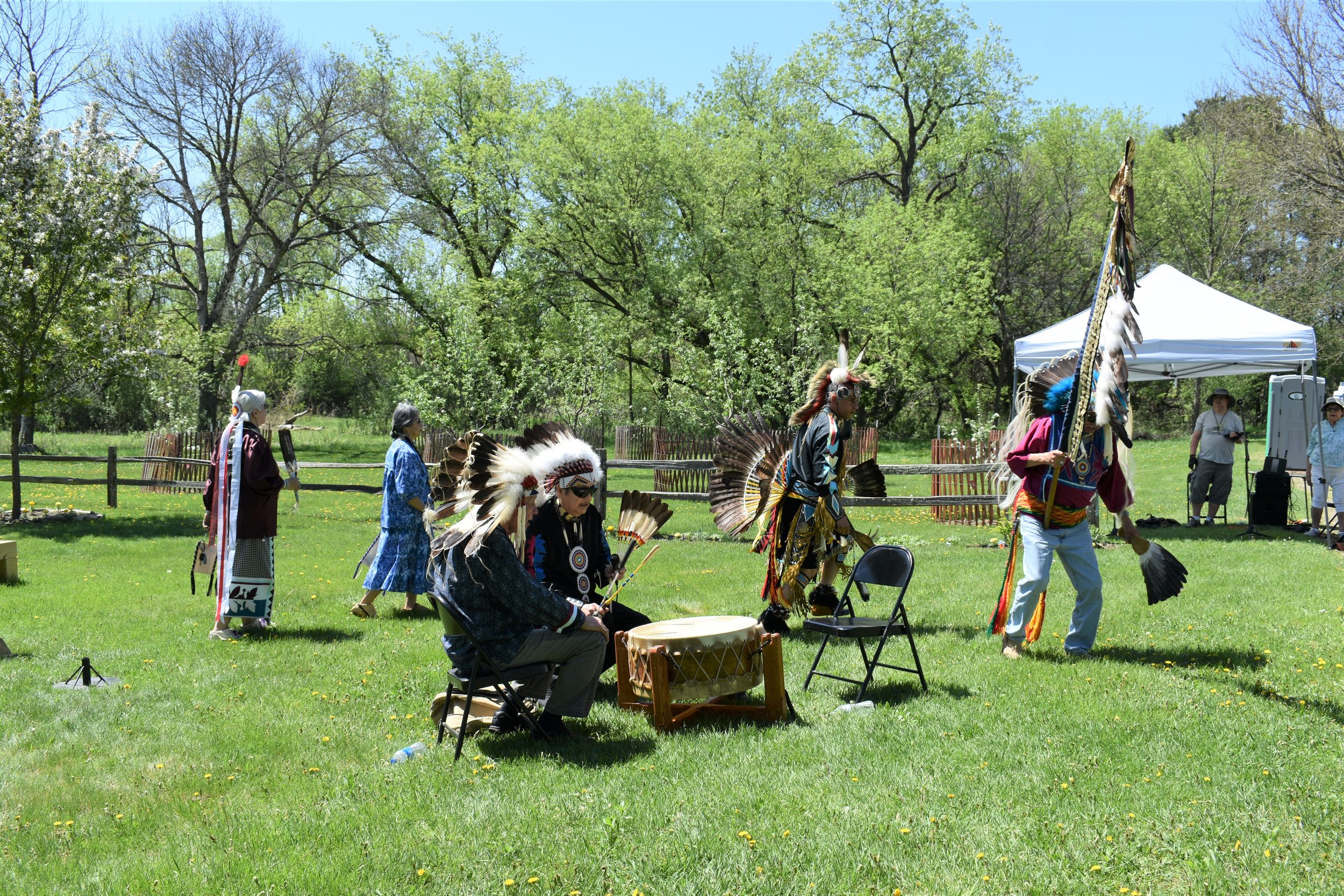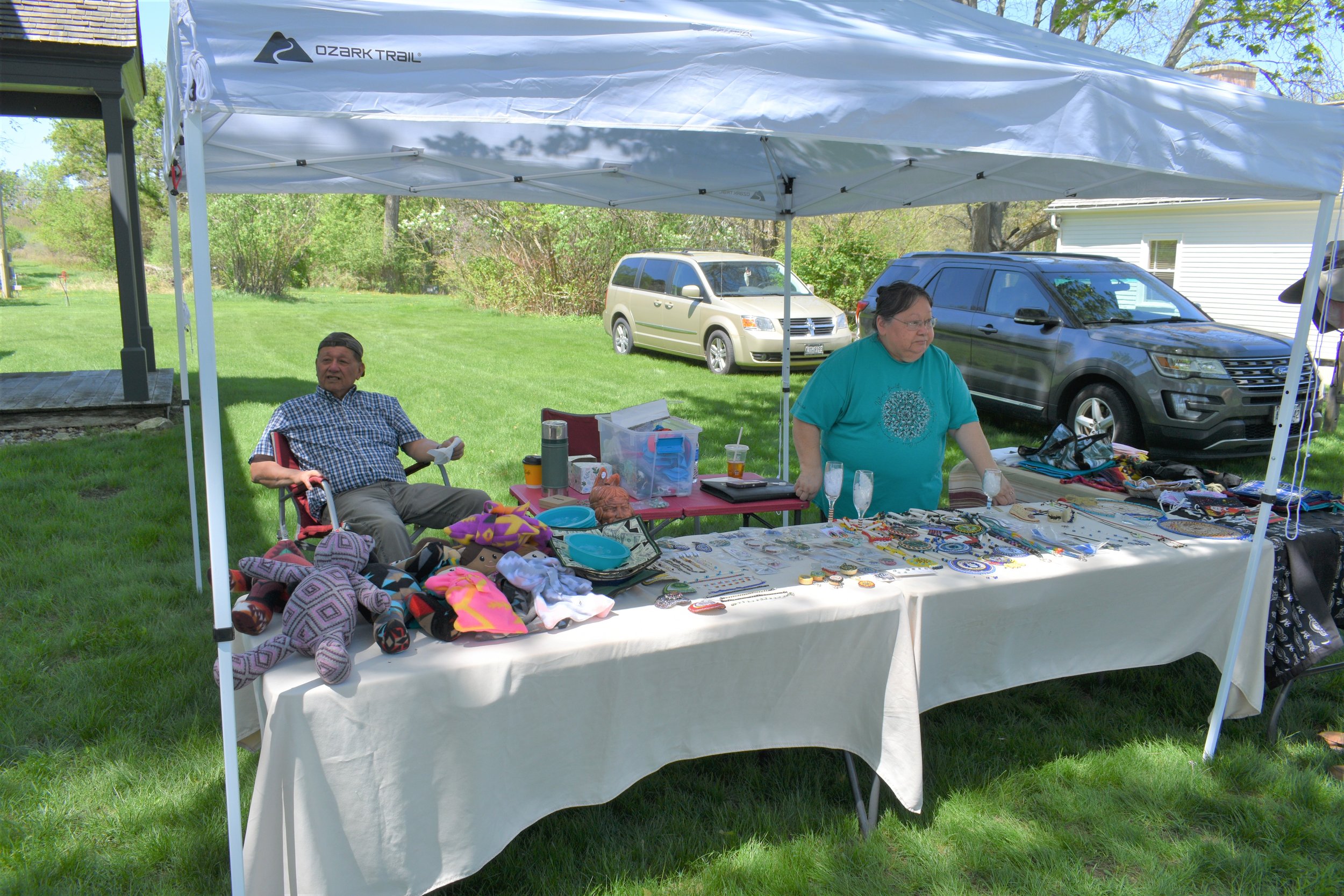Historic Indian Agency House at Fort Winnebago holds grand opening of outdoor exhibit “Landscape of Families”
The Indian Agency House at Fort Winnebago located in Portage, Wisconsin, is just one of many that are part of Native American history in the United States.
According to Historic Indian Agency House website, “In 1931, a statewide coalition of civic-minded citizens saved an abandoned home in Portage, Wisconsin, restoring it and opening it as a museum in 1932. The home’s worth lay not in architectural grandeur nor association with famous personages. Rather, its significance lay in the history forged within its walls during its early years as a frontier Indian agency—or embassy—between the Ho-Chunk Nation and the United States government at a critical period of Westward expansion and the development of Jacksonian Indian policy.
Located at the ancient trail between the legendary Fox and Wisconsin Rivers, this building survives as a poignant reminder of the juncture at which the Ho-Chunk Nation was forcibly expelled from their homeland. It was a time of intense political debate, social change, conflict, opportunity-seeking, moral testing, trauma, and new beginnings. A swift and stark transformation of the historical, cultural, and physical landscape ensued.
The Indian agency house was built in 1832 to house Indian sub-agent John H. Kinzie and his wife, Juliette. This sub-agency was established as a means of fulfilling the treaty of 1829 between the United States government and the indigenous Ho-Chunk (Winnebago) tribe. A lead mining boom had caused such an influx of settlers on Ho-Chunk lands that the government resolved to forcibly purchase the area from the tribe in order to squelch conflict and open up the land to further settlement and development. This resulting treaty promised the tribe a yearly annuity payment in silver along with blacksmithing services and goods in return for their land east and south of the Wisconsin River.”
Kinzie needed to compile the families and their members’ names though, in order to make good on the promises made in the treaty. He did the best he could to keep an accurate list of the Hoocąk (Ho-Chunk) members names, albeit by spelling the names phonetically as he interpreted them. Today, those families and their members’ names and villages, have been compiled again, this time thoroughly and in the Hoocąk language.
In a collaborative effort between the Historic Indian Agency House and the Hoocąk Nation Museum and Cultural Center in Tomah, Wisconsin, and using information from Kinzie’s annuity register unveiled an outdoor exhibit entitled “A Landscape of Families”. The exhibit, built on the very site where a census was taken almost two centuries ago, aims at educating the public on some history between the Hoocąk people and the United States government.
“When it comes to talking about how we came out of the past and who we are today, it's a lot of talk about struggle and things that are not always that beautiful,” said Hoocąk Nation Museum and Cultural Center Director Josie Lee. “I like to highlight the fact that we are still existing. As a people, we have many tribal members who came down today to see this. So, when we are talking about just names on a list it's really hard to imagine who they are as individuals, especially if you have no connection to them. But we hope that what you see through this, is that these names, our grandparents, their parents, their mothers and children, each of these individuals had to make a decision to collect a payment based on a decision that was made for them.”
Lee noted, the government didn't give options to Hoocąk people. Instead, they were told they had to sign this paperwork to get payment, otherwise payment would not be made. Payments that were needed to provide food for their families in the 1830s.
By this time, the Hoocąk had already been forced into signing two treaties, that saw them seeding a large portion of their lands. “After 11 removals and attempts to remove Hoocąk people, we are still here,” said Lee.
She shared, “When I was younger, I asked my grandfather if we had been removed and if we signed these. He was very adamant that no, that did not happen. So, it is a little bit harder for me to find connections within this but it doesn't mean that there aren't. I just don't know my family tree back this far. This is almost 200 years ago, and I'm in my 30s so it's a little harder to piece it for me. But my husband's family is listed in here.” Lee stated there were multiple sites where roles were being taken of Hoocąk families and villages. This gave the Hoocąk an option to travel to a certain site based on what was closer to them.”
Executive Director and Curator Adam Novey, of the Indian Agency House, stressed, for this project, making sure that the historical facts were correct was very important. Novey acknowledged that without Lee’s knowledge and her helping put together this project together, the exhibit would not have been a possibility.
How did this exhibit come to be? Well, Lee shared how it all began. “When we had the fire in the building next door (to the museum in November 2020), we put out a call for people to help. One of the people that came to volunteer was Adam. And as he came up every week, we started talking about the connection of Hoocąk to this specific site. And since we are at the 190th year, I thought it was a good idea to start planning for really bringing conversations back to what it meant to have signatures in a location, but why also this place stands as a National Historic place on the National Register. So that that was really kind of the beginning. Then, we applied for a grant through the Wisconsin Humanities, and thankfully, we were able to get it. Adam was really the big driver of just getting the grant put forward, and Henning Garvin (Hoocąk tribal member and Language Program Manager for the tribe) helped out with translating. I reached out to so many different people. One was Steve Kantrowitz, who's a professor of history at UW Madison. He is working on publishing a more comprehensive historic text around Hoocąk removals. I have relied on him very heavily for the last few years with not just this exhibit, but the one that I've done with the Field Museum as well. It's a lot of making sure that I know stories, but I don't know dates that go on with the stories and so it was nice to have the historic documents to kind of backup them up. So then next, I had spoken with Janice Rice (Hoocąk tribal elder) quite a bit and so we are still working on getting her interview. She and other museum board members Henning Garvin and Hattie Walker (Hoocąk tribal elder) have also been helping to find different people that might have family stories connected to this place. We know that people tell the stories, but often they don't get shared outside of the immediate family. So, trying to figure out where those pockets of knowledge might be hidden has been a lot slower than we thought. So those three have been really helpful in just finding people that we can interview. Next, was Shane Yellow Thunder who helped. He had one story that we were able to record and he helped by looking through all the names on the list.”
Addressing visitors gathered for the exhibit unveiling, Novey said, “This exhibit behind me was based on an 1832 annuity register. So, to understand the history surrounding that, you have to start back 198 years. In 1826, the Hoocąk were living from the north end of Lake Winnebago on down to South of Rockford, Illinois, over to Mississippi on the West, up to the Black River, and pretty much everywhere in between the Fox River. We're living in land that their ancestors had been on for since time in memorial.” Novey continued, “Today, we look back at history as something that happened in the past. We look back with benefit of hindsight on this history to learn from them. This history was the future, perhaps frightening, prospects of uncertainties impending expulsion so you know, thinking about what's on the minds of these people who gathered here who's standing where we sit now. I don't know if any of them would have ever dreamed that 190 years later, many of the descendants who many of our guests with us today, part of that district. Their descendants would still be here today a sovereign nation. And that's an important thing about this exhibit, it's not something entirely confined to the past. You look at the names of people who lived here 190 years ago. Consider the story of what all they went through and learn from that today. But you also see that the Hoocąk nation made sure their story did not end with the story of the agencies, with a story of being expelled from their homeland.”
Novey pointed out the exhibit talks about time in history, a time that affects continuing stories of people today. And that with the continuation of this exhibit story, heritage preservation is something that continues on into the future.
Ensuring the language continues well into the future, Shane Yellow Thunder, also a Hoocąk tribal member, works in the Hoocąk language division. Yellow Thunder started his work in language preservation in 2006 as an apprentice language coach. He shared different ways the division works with fluent elder speakers to help teach the younger generations the language, all the way down to children that attend Hoocąk Head Start. With all of the immersion programs and learning materials made available to tribal members, Yellow Thunder is encouraged in a secure future for the Hoocąk language which serves as the backbone of their culture.
A gathering, of course, would not be complete without food. Elena Terry, an Executive Chef, Hoocąk tribal member, and founder of Wild Bearies, an educational, community outreach nonprofit that strives to bring ancestral foods to communities in a nurturing and nourishing way, served up some indigenous foods.
Asked by Lee to be a part of the unveiling event, Terry said that she recognizes the hard work Lee put in curating the research for the exhibit. “Wild Bearies is about building community and reconnecting people to our community. So, if I can show up to support her, and cook food that will help nourish people, I was all in. If you look at our holistic food system, in our traditional food system, there's a lot of healing that can happen when you not only consume, but practice what you need to do to be a good steward of the land, so that our resources can continue. Or if you literally get grounded by cultivating ancestral crops, it's a time where we really need the healing and to be able to share a meal that's universal with people and have them appreciate and understand our culture and our space. And really what it is to be a community not just indigenous, we all occupy a larger community. So, being able to share in ways that it can be appreciated with like a bite or a memory. That's what we want to do,” Terry said.
In addition to some indigenous cuisine for visitors to enjoy, was a performance by Elliott Funmaker and company. The group, known throughout Wisconsin for their drumming, singing, and dancing in an effort to educate the public about Hoocąk culture, seemed to wow everyone.
The Hoocąk people have been known far and wide for their hospitality. At this event, historic in and of itself, carried on that tradition.

